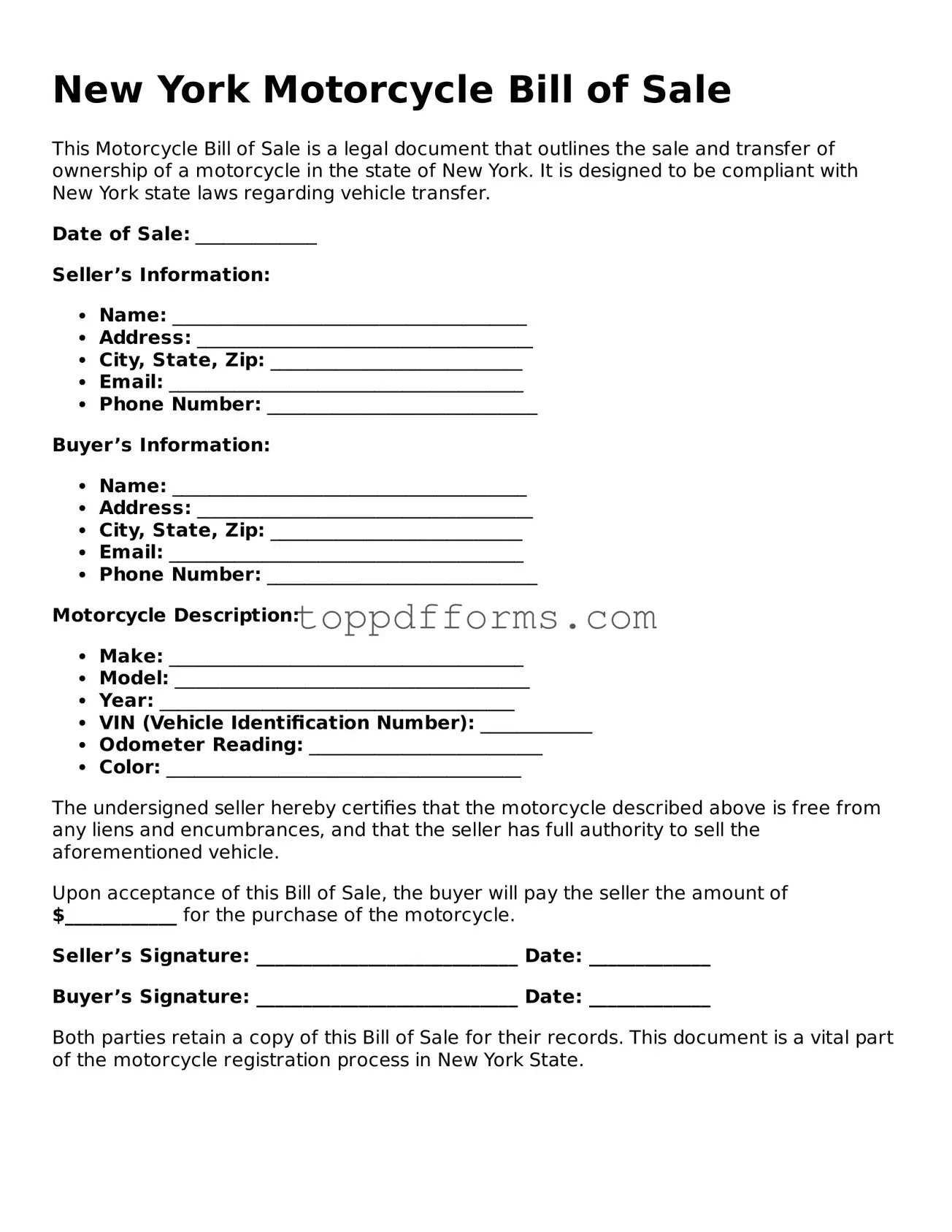What is a New York Motorcycle Bill of Sale?
A New York Motorcycle Bill of Sale is a legal document that records the sale of a motorcycle between a buyer and a seller. This form serves as proof of the transaction, outlining key details such as the motorcycle's make, model, year, Vehicle Identification Number (VIN), sale price, and the names and addresses of both parties involved. It is essential for transferring ownership and can be used when registering the motorcycle with the Department of Motor Vehicles (DMV).
Do I need a Bill of Sale to sell a motorcycle in New York?
While a Bill of Sale is not legally required to sell a motorcycle in New York, it is highly recommended. This document protects both the buyer and the seller by providing a clear record of the transaction. It can help resolve any disputes that may arise after the sale, such as issues related to ownership or payment. Additionally, the DMV may request a Bill of Sale when the buyer registers the motorcycle.
What information should be included in the Motorcycle Bill of Sale?
The Motorcycle Bill of Sale should include several important pieces of information. These include the names and addresses of both the buyer and the seller, the motorcycle's make, model, year, and VIN, the sale price, and the date of the transaction. It is also advisable to include any terms of the sale, such as whether the motorcycle is sold "as is" or if there are any warranties. Both parties should sign the document to validate the agreement.
Is there a specific format for the New York Motorcycle Bill of Sale?
There is no mandated format for the Motorcycle Bill of Sale in New York. However, it is important that the document is clear and includes all necessary information. Many templates are available online, which can help ensure that all essential details are covered. Regardless of the format chosen, both the buyer and seller should retain a copy for their records.
What should I do after completing the Motorcycle Bill of Sale?
After completing the Motorcycle Bill of Sale, both the buyer and the seller should sign and date the document. The seller should provide the buyer with the signed original, while retaining a copy for their own records. The buyer will need this document when registering the motorcycle with the DMV. It is also advisable to notify the DMV of the sale to avoid any future liability related to the motorcycle.
